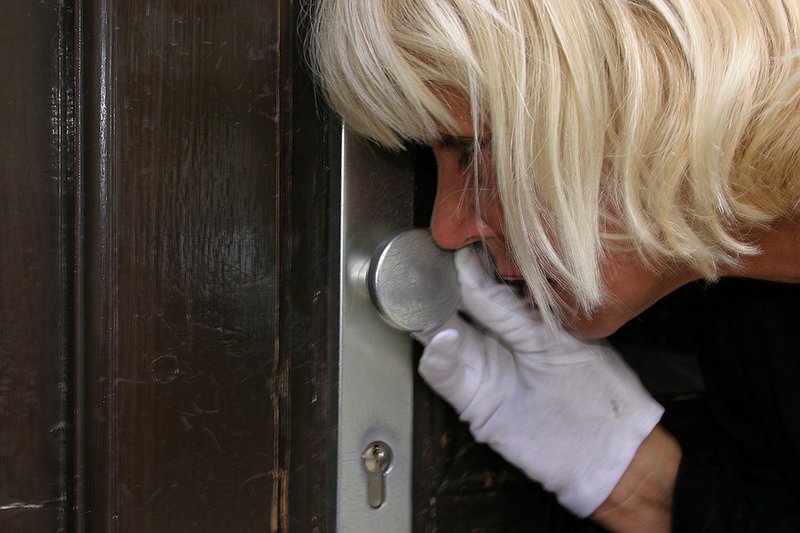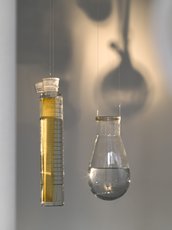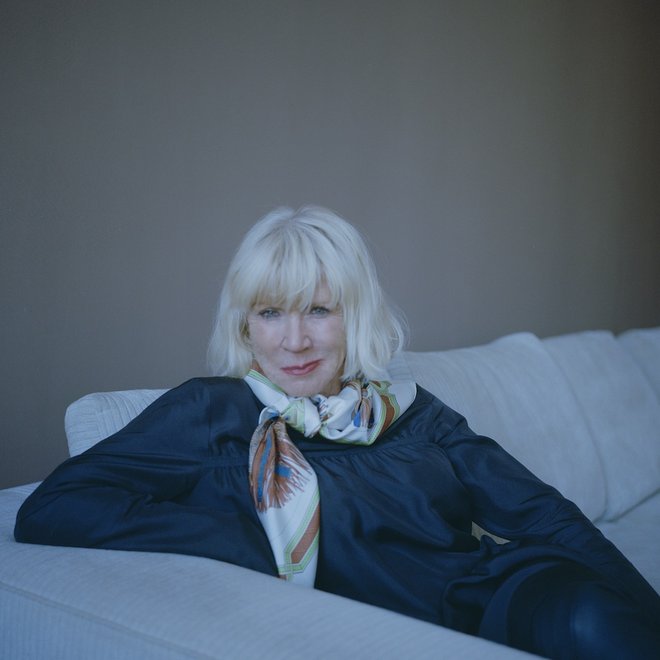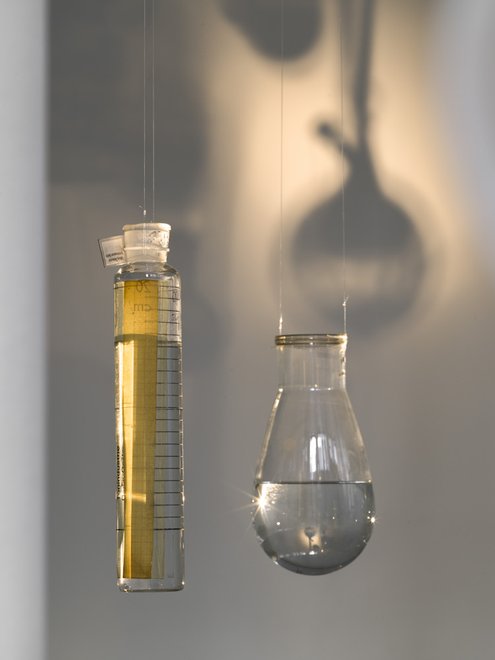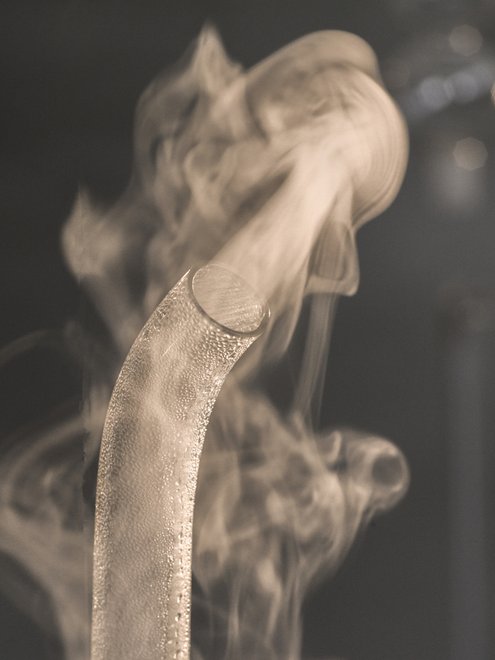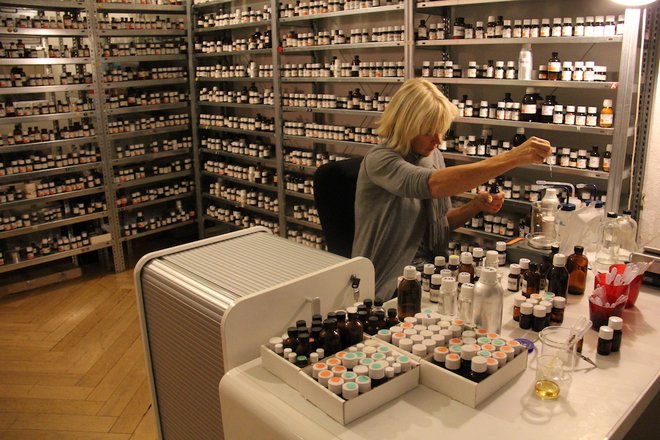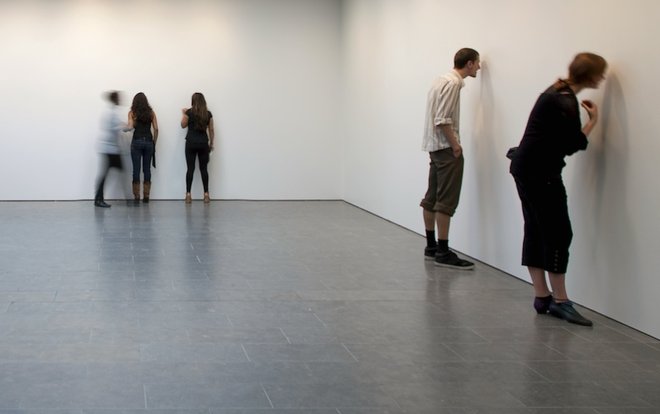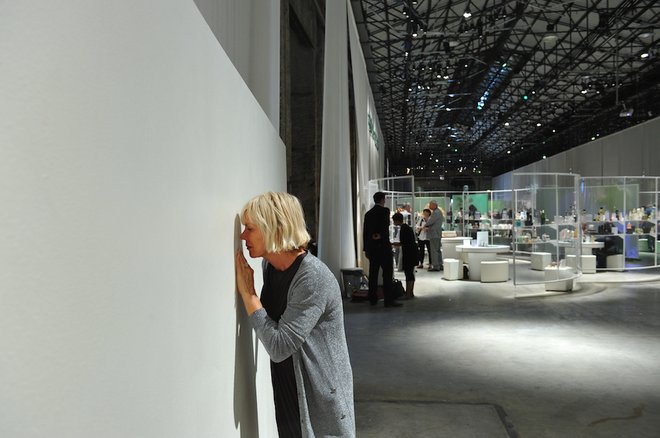What smells so nice?
Renowned Norwegian smell researcher and artist Sissel Tolaas has built smell showers and synthesized the smell of money. Her Berlin "archive" houses nearly 10.000 olfactory documents – including the smells of Vienna, sweat, and war. Nothing smells bad to the expert, but then again, nothing smells good either.
„Nothing Stinks!“
What does war smell like? You’ve reconstructed the smell of the First World War for various exhibitions—rumor has it that there have been several incidents of visitors becoming nauseous as a result. Is that a reaction you intend?
War smells terrible, of course. So the reactions are both fitting and intended. That war must have smelled of mustard gas, corpses, blood, bandaged wounds, horse carcasses, and loamy soil. Unfortunately there wasn’t anyone left for me to ask, since the people involved have all since passed away. So I had to rely on history books, eyewitness accounts and other written documents. One of the sources was written by an army chemist, which was very helpful.
Do you find certain smells particularly “beautiful”?
Smelling and smells are all beautiful. I stopped judging smells according to the criteria good and bad a long time ago. I’ve become incredibly tolerant towards all kind of smells, and that has changed my whole concept of judging using words. I try to avoid hierarchical systems or definitions, which tend to be very abstract, empty, and often authoritarian. Nothing stinks, we just think it stinks. What’s even more beautiful is that olfactory memories remain one hundred percent stored for one year, while only thirty percent of our visual memory can be retrieved after just three months. So we had better start cultivating our sense of smell and using it more actively.
For your project Body SmellScape you collected sweat from people who suffer from phobias and severe anxieties. You then used it, to put it simply, as an additive to the wall paint in a gallery, among other things. The visitors’ reactions were dramatic—they fled or even became aggressive.
Can one smell a person’s psychological state of mind? The answer is yes. The fact that the surface of the wall literally became the skin of a person sometime freaked people out, but the opposite was the case as well. People always associate smells with personal experiences stored in their memories. Smells aren’t per se good or bad, pleasant or unpleasant—they only become so in the mind. Having said that, humans, rats, and cockroaches are the biggest generalists on planet earth; the purpose of their noses is to find food and partners. That says it all, doesn’t it?
“Can one smell a person’s psychological state? The answer is yes.”
You studied mathematics, chemistry, linguistics, and art. Since 1990 you have focused on the topic of smell where science and art intersect. You operate a laboratory in Berlin and have a smell archive with almost 10,000 smells and up to 4,000 smell molecules. Where does your passion for smells come from?
Smell is about air and about breathing—about life and being alive. I began wondering about what is going on in the air at a very young age. What does “invisible” mean? What is weather? Coming from Scandinavia, my senses were always very alert, and from very early on I actively used them to understand, navigate, communicate, tolerate, and appreciate life. Later I made this my profession.
It is estimated that humans are able to distinguish between more than a trillion different mixtures of scents, but can’t really express this through language. You’ve even developed a “nose language” called NASALO in response. It has more than 2,500 terms—such as “CLESH,” for clean sea, or “INO,” which represents cleaned asphalt and cleaned stones.
It’s a lexicon for the nose. Unlike colors, smells are thought of as too intrinsic and private, impossible to express through language. From the beginning of my work with smell, language and communication have been essential and a major part of my research.
NASALO is a fictional international language consisting of words to be used to communicate smells and smell impressions. It only partly consists of words from spoken human languages. NASALO has its own logic and linguistic rules.
„The world is abundantly naturally perfumed.”
How do you capture smells? In videos, we see you using a kind of “smell camera,” a glass funnel attached to a tube, which sucks the smell into a glass vial.
First I identify the source of the smell with my own nose, then I decide if I can bring the source to the lab to be analyzed or if I will have to do the analysis on site.
I use devices that enable me to collect and sample smell molecules emitted by smell sources. Through chemical analysis, lab chemists break down the collected samples into individually identifiable molecules. Using this data, I can chemically reproduce the same smell endlessly for various purposes. Each smell sampling then has a smell molecule database, and this in turn becomes part of extensive archives focusing on different core topics, such as City SmellScape, Body SmellScape, or Ocean SmellScape. Each of these main categories is then organized into subcategories like Tolerance, Pollution, or Fear.
“You just have to decide, now I am going to smell, and it will immediately add a new dimension to your life.”
Do you wear perfume?
No, I don’t wear perfume. I’m surrounded by olfactory references on my body, they all do the “talking.” I only add a functional smell-construct if I need to express myself beyond language.
Are we losing our sense of smell?
Smells always have been and are here. With every breath we take, we inhale smell molecules. Even when we sleep, we smell. We have been communicating smells through the advertising of commercial products enclosed in containers and bottles for far too long. Marketing took over where science left off. But now people care about smells. Educating and training the senses unlocks the potential to be your better, fitter, and more intelligent self.
How do I train my nose?
A bee finds a flower, a dog finds a sausage, a person finds another human being. You just need to get out of your comfort zone to explore that. Many problems can be solved by becoming more tolerant towards smells. And one thing is for sure: We are all equipped with a body and its senses. That is all free. You just have to decide, now I am going to smell, and it will immediately add a new dimension to your life.
Sissel Tolaas was born in Norway in 1963. Her background is in mathematics, chemistry, linguistics, and art. Since 1990, she has been building smell archives in Berlin. Her projects have been exhibited at museums including MoMA in New York, the Tate Gallery in London and at dOCUMENTA (13). Her clients include international corporations such as Louis Vuitton, Adidas, Cartier, the UN, and Sony. Together with Austrian designer Tino Valentinitsch, Sissel Tolaas has developed the “Smell Memory Kit,” to which a selection of 1,500 abstract smell molecules can be connected and coded to create personal smell memories. The kit is for sale at Vienna concept store Supersense.

